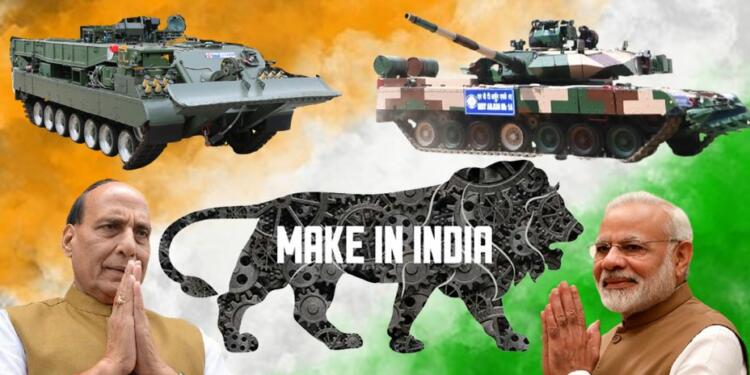In an incredibly huge step forward, India is soon going to remove its dependency on other countries, when it comes to defence equipment. As far as trends suggest, we will soon be atmanirbhar by the virtue of being able to manufacture 90% of defence products.
Defence Minister confirms India’s rising atmanirbharta in defence:
On Friday, November 19, Defence minister Rajnath Singh reassured the nation that we are successfully striving forward in fulfilling Prime minister Narendra Modi’s goal of ‘self-reliant defence industry’. Informing the nation that currently Indian defence forces use 65% of weapons and products which are made in India, the defence minister promised that soon these 65% will be turned into 90%.
Addressing an event in Jhansi, Rajnath Singh said, “Defence Ministry is continuously working in mission mode to fulfill Prime Minister Narendra Modi’s resolution of ‘Self-reliant India’. At one time 65 to 70 percent of the defence material in the country was being imported from outside. Today the picture has changed and we are buying 65 percent of the defence items from India itself,”
Also read: Akash Prime is India’s first step towards an Iron Dome like defence technology
Referring to UP chief minister Yogi Adityanath’s pro-investment policies, the Defence Minister informed that the ministry is now working on a proposal to open a defence technology and testing centre in Uttar Pradesh; DRDO already has two laboratories in the state.
PM Modi initiates ‘Rashtra Raksha Samarpan Parv’:
Earlier, Prime Minister Narendra Modi handed over Light Combat Helicopter (LCH) (developed by Hindustan Aeronautics limited) and other indigenous defence equipment, to the Indian Air Force. PM Modi also gave an electronic warfare system called ‘Shakti’ to the Indian Navy. Moreover, the foundation stone of defence industrial corridor project worth 400 crores was also laid. These initiatives are part of the ongoing ‘Rashtra Raksha Samarpan Parv’ event.
India slowly shedding its legacy of being a defence importer:
In its 70 years of existence as an independent nation, India had always relied on other countries like Russia, France, USA and lately Israel, for its defence equipment. As reported by the TFI, when Prime minister Narendra Modi came to power in 2014, he laid emphasis on India’s atmanirbharta in defence manufacturing. Since it was not possible to suddenly reduce India’s dependence on defence imports to zero, the government added a technology transfer clause to its deal. Under this, a foreign country selling its product in India would have to provide technical know-how to Indian companies and the government.
To cut costs in defence deals, the government made some strict provisions with regards to agents involved in deals. After making it tough to import, the government went on to solve the bottleneck issue of bureaucratic hindrance in India’s defence industry, and dissolved Ordnance Factory Board (OFB). Moreover, the government is engaging local private sectors through initiatives like Atmanirbhar Bharat and Make-in-India.
Also read: Now employees in the Defence sector cannot call for bandhs and strikes
As India enters into a new phase of technological and logistical independence from developed nations, we should strive towards strengthening our defence exports as well. It is not impossible, as India’s defence exports have risen by more than 235% under PM Modi. Our low-cost exports have the potential to give a massive boost to India’s strategic interests.


































